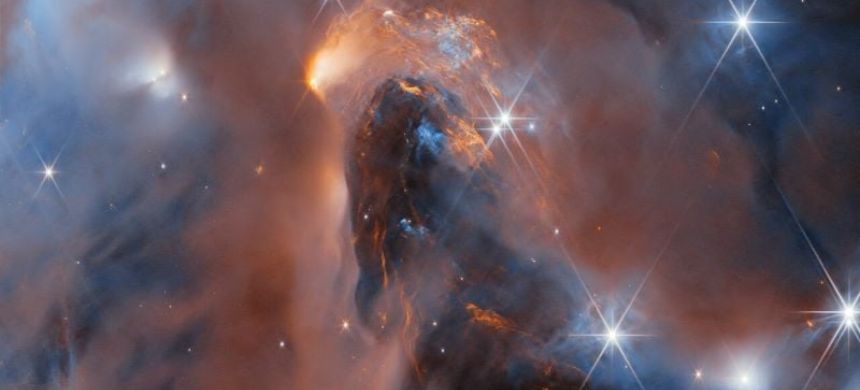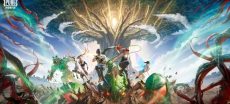The James Webb Space Telescope has identified six potential rogue worlds—planetlike objects drifting freely without being bound to any star. Among these is the lightest object ever discovered with a surrounding dusty disk.
These intriguing objects suggest that the same processes responsible for star formation might also create objects slightly larger than Jupiter. “We are probing the very limits of the star-forming process,” said lead author Adam Langeveld, an astrophysicist at Johns Hopkins University. He highlighted the significance of understanding whether such objects could have evolved into stars under different conditions.
The discoveries were made during Webb’s deep survey of the young nebula NGC1333, located about a thousand light-years away in the Perseus constellation. The European Space Agency released a new image of NGC1333, showcasing its vivid interstellar dust and clouds. The findings will be published in *The Astronomical Journal*.
Data from Webb indicate that these rogue worlds are gas giants, approximately five to ten times more massive than Jupiter. They represent some of the lowest-mass objects likely formed through processes usually associated with star and brown dwarf creation—celestial bodies that fall between stars and planets but never ignite hydrogen fusion.
Also Read: Webb telescope captures extreme weather patterns on brown dwarfs
“We used Webb’s unprecedented infrared sensitivity to detect the faintest members of a young star cluster,” said Johns Hopkins Provost Ray Jayawardhana, a senior author of the study. He noted that the smallest free-floating objects formed like stars overlap in mass with giant exoplanets orbiting nearby stars.
Despite Webb’s advanced capabilities, no objects lighter than five Jupiter masses were detected, suggesting that lighter stellar objects likely form similarly to planets. “Our observations confirm that planetary-mass objects can form in two ways: from the contraction of gas and dust clouds, similar to stars, and from disks of gas and dust around young stars,” Jayawardhana explained.
The most fascinating of these starless objects, estimated to be about five Jupiter masses (roughly 1,600 Earths), has a dusty disk around it. This disk suggests it formed like a star, as dust typically accumulates around central objects during early star formation stages, according to Langeveld.
Disks are crucial for planet formation, raising the possibility that these objects might be sites for forming “mini” planetary systems. “These small objects with masses similar to giant planets might be capable of forming their own planets,” said co-author Aleks Scholz from the University of St Andrews. He speculated that these could be nurseries for miniature planetary systems, smaller than our solar system.
Using the NIRISS instrument on Webb, the team analyzed the infrared light profiles of all objects in the star cluster and reexamined 19 known brown dwarfs. They also discovered a new brown dwarf with a planetary-mass companion, challenging existing theories on the formation of binary systems.
“It’s likely that such pairs formed similarly to binary star systems, from a cloud fragmenting as it contracted,” Jayawardhana said. He emphasized the need to refine our models of star and planet formation based on the observed diversity of systems.
Rogue worlds might originate from collapsing molecular clouds that lack the mass for nuclear fusion or from gas and dust in disks around stars that later coalesce into planetlike objects, which are then ejected from their star systems due to gravitational interactions.
These free-floating objects blur the lines between celestial classifications, with their masses overlapping those of gas giants and brown dwarfs. Although such objects are rare in the Milky Way, Webb’s data suggest they constitute about 10% of celestial bodies in the studied star cluster.
In the coming months, the research team plans to study the atmospheres of these faint objects and compare them to heavier brown dwarfs and gas giant planets. They have also been granted additional Webb telescope time to explore similar objects with dusty disks and investigate the potential for forming mini planetary systems similar to Jupiter’s and Saturn’s moons.
This news was reported on the Eureka Alert website.











